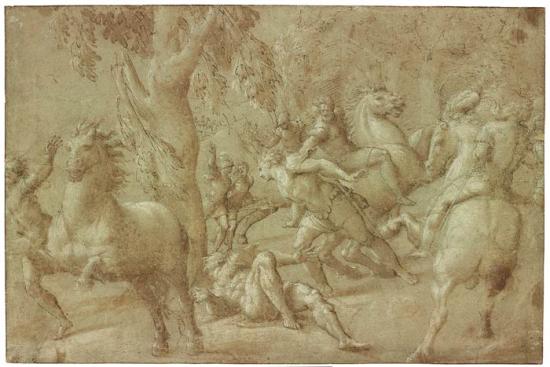
Conversion of St. Paul, early 1530s
Gift of J. P. Morgan, Jr., 1924
This drawing is the modello for a well-known painting by Pordenone, now lost, that must have impressed critics and artists alike through the virtuosity of its radically foreshortened figures and its splendid sense of movement and energy. It spawned several copies, Pordenone repeated sections of it for Venetian collectors, and Tintoretto used it as inspiration for a painting of the same subject (National Gallery of Art, Washington).
Pordenone's composition adapted elements from a tapestry cartoon of the same subject by Raphael, which was displayed in the house of Cardinal Domenico Grimani in Venice.
Patronage
The astonishing creative efflorescence of sixteenth-century Venice would not have been possible without a rich network of civic, religious, and governmental support. The republic was governed by a hereditary ruling class under the leadership of a doge—generally a member of the inner circle of powerful local families whom the aristocracy appointed for life. Venice celebrated itself and proclaimed its civic ideals in large paintings by Titian, Veronese, and Federico Zuccaro that lined the walls of the Doge's Palace. Wealthy lay confraternities, called scuole, provided another essential layer of support and promoted a distinctively Venetian style of large narrative composition. Finally, a powerful and enlightened aristocracy commissioned works for their private dwellings in town and on the mainland. Whereas Giovanni Bellini and his followers had primarily produced altarpieces and religious images for personal devotion, this new generation of Venetian artists also met the demands of their expanding clientele for secular subject matter.
